Mexican cuisine is one of several that gets saddled with the "soft bigotry of low expectations." The common perception is that it's all chips and salsa and guacamole, tacos and burritos and fajitas, with maybe some tequila shots, mariachi bands and sombreros mixed in for good measure. In fact, it's an incredibly complex and varied cuisine, which is finally starting to get the attention it deserves in the U.S.: witness the success of Enrique Olvera's Cosme in New York, or Alex Stupak's Empellon, or places like Taco Maria and Broken Spanish in L.A., or Californios and Cala in San Francisco, or Rick Bayless' restaurant empire, plus new Chicago places like Dos Urban Cantina and Mi Tocaya. I could keep going; but instead, let me bring this back home.
Because someone is trying to help Miami catch up. At Olla, Chef Scott Linquist's new restaurant on the west end of Lincoln Road, you'll find a menu that goes well beyond the customary tropes, ambitious both in its pursuit of the authentic flavors of Mexico and in finding modern ways of presenting them. My first visit to was in December, only a week after they'd opened, and I was pretty excited by what I found. Not much later, we started to work on putting together a Cobaya dinner, which came to fruition last week.
(You can see all my pictures from the dinner in this Cobaya Olla with Chef Scott Linquist flickr set).
Everyone was welcomed with a house cocktail – a variation on the flavors of a Moscow Mule, which they dubbed the "Oaxacan Burro," featuring Alipus mezcal, a ginger and epazote shrub, a slug of ginger beer and a squeeze of lime. This was prelude to a mezcal sampling courtesy of XXI Wine and Spirits, a distributor for Alipus, which poured three different "single village" offerings. I'm becoming a real fan of mezcal, which is almost exclusively a craft, small-production product, and which can show a fascinating variety of styles and flavors – some with a clean, almost sake-like purity, others floral, or fruity, or grassy, or smoky, or all of the above.
Once our group of fifty was seated (we took over the restaurant for the night), dinner started with a round of bocadillos, or snacks.
Yes, chips and salsa. But not just any garden variety salsa: four different salsas, starting with a basic salsa fresca, and also including a fresh, raw salsa verde (with some bright, fragrant mint in addition to the usual cilantro), a deeper-flavored, charred tomatillo and habañero salsa verde, and a hearty, red brick hued version with pasilla Oaxaca chiles[1] and roasted pineapple. Plus guacamole, because yes, everyone loves guacamole.
(continued ...)
Linquist also provided bowls of freshly fried chicharrones, which had been dappled with salsa borracha, roasted garlic aioli and cotija cheese (I used these as alt-chips to scoop guacamole and salsa). And fresh, crisp vegetables – batons of cucumber and jicama, rounds of watermelon radish – sprinkled with tajin, a perky seasoning of salt, chiles and lime. And dishes of chapulines, or fried grasshoppers, which he'd supplemented with Marcona almonds, golden raisins, and chocolate dust, which have a nicely crunchy texture and are mostly a vehicle for whatever flavorings they're dusted with after they've been fried.


A round of seafood dishes followed. Plump little kumamoto oysters were dressed with a tomatillo, cucumber and serrano chile mignonette and a drop of lemon olive oil, then crowned with a lobe of creamy sea urchin. A dish Linquist called "ahumado" was a variation on one served on the Olla menu as a "tarro," or jar: oily hot-smoked salmon, made in-house, was combined with three eggs – hard-boiled chicken eggs, jewel-like beads of smoked trout roe, and for a little extra flair, a dollop of Siberian osetra caviar – then garnished with green poblano salsita and Mexican crema, and served with slabs of soft toasted bolillo bread for scooping. I was intrigued to learn that the dish wasn't just a flight of fancy: the flavors were inspired by a smoked salmon sandwich served in Polanco, a neighborhood of Mexico City which has a large Jewish population. Who knew?
And Linquist's navajas – razor clams – were one of my candidates for dish of the night. There was a lot going on here – the briny clams, the brothy sauce inflected with morita chiles and roasted tomatillos, the aromatic slivers of toasted garlic, the salty coins of cured chorizo, the rich shrimp head aioli – and it all worked together beautifully.[2]
And yet either of the two next items – in a round Linquist called "Pato y Patas" – could also have been my dish of the night. For the "pato," he did a sope of duck three ways – the breast cured and seared, the leg cooked in its own fat like carnitas, a mousse of foie gras for the base – all served on a puck of masa, and garnished with a mole coloradito, more of that pasilla Oaxaca, and a kumquat marmelada. It was excellent. And if you want the 101-level version of this dish, look for the duck carnitas gordita on the Olla menu; it doesn't quite have all the bells and whistles, but it'll give you a pretty good idea.
The "patas" element was also a variation on a regular menu item, Olla's excellent menudo. The rich broth is made with three different patas (feet) – I'm guessing pork trotters, cow foot and chicken feet – and has a beautiful, gelatinous stickiness like a good tonkotsu ramen broth. It's warmed with guajillo chiles, studded with bits of pork and slippery, silky tripe, and topped with a sunny side up egg and Mexican oregano. I absolutely love it.
The next round was all about the pig: three different variations, from three different parts of the animal. There was cochinita pibil, the shoulder slow-roasted inside a banana leaf, flavored with achiote and topped with habañero pickled onions. There was carnitas, the leg and shank cooked in a Michoacan style confit, and served with a brothy salsa verde and pickled vegetables. And there was a dish of charro beans with chipotle chiles and a roasted tomato salsita, studded with tender, slow-cooked pork cheek and topped with crisp slabs of pork belly. Tortillas were provided for some D.I.Y. taco action.
In what was more than likely a bit of overkill, Linquist followed with another round of dishes, inspired by the flavors of Oaxaca. First, a lamb barbacoa, the shoulder rubbed with a paste of pasilla chiles and slow-roasted, served swimming in a salsa borracha and topped with a bright and lively roasted jalapeño and mint salsita. And finally, a huge, long-bone short rib,[3] the meat practically melting, napped with a dark, nearly black mole chichilo, garnished with some sweet roasted onions.
For some vegetable accompaniments, we also had some crispy Brussels sprouts with a roasted garlic mayo and cotija cheese, roasted butternut squash with sweet piloncillo, and roasted cauliflower topped with a poblano crema and toasted pumpkin seeds.
To wrap things up, a little sweetness: a flan of cajeta (goat's milk dulce de leche, which retains just the faintest whiff of goat-y barnyard funk over the caramel sweetness), topped with muddled raspberries, smoked Maldon sea salt and whipped cream. And maybe a little more mezcal.
I thought this was a great meal. The dinner Chef Linquist put together was similar in spirit to his regular menu at Olla, and captured many similar flavors, but often repurposed in different ways, elaborated upon, expanded and enhanced. While we generally encourage chefs to go off-menu, this was one instance where I didn't particularly mind the similarities. If you weren't able to join us for the Cobaya dinner, the good news is that you can taste something very similar any time you want: just head over there.
A big thank you to Chef Scott Linquist, to Alexandria Guerra for all her help pulling this together, to XXI Wine and Spirits for their generosity with the delicious mezcal, to all of the crew at Olla for a great night, and as always most of all, to the guinea pigs whose interest and support make these events possible.
Olla
1233 Lincoln Road, Miami Beach, Florida
786.717.5400
[1] These dried chiles, Linquist noted, which are only sourced from a particular region of southern Mexico, and have a robust, smoky, almost fruity flavor, don't come cheap: they're $60 a pound.
[2] A side note on wines: in addition to the mezcal tasting, Olla put together a very thoughtful selection of wines to accompany the dinner – Bonny Doon's delightful, bright Picpoul, an Alsatian brut rose, a grenache and carignan blend from Priorat – with some informative notes on the back of the menu explaining the pairings. For these seafood courses, the notes sung the praises of French Chablis, in particular contrasting it to the typical heavy, oaky, buttery California style of chardonnay. So I was a bit puzzled when I took a sip and found what tasted uncannily like a buttery, oaky California Chard. Linquist's crew saw "chardonnay" on the menu and grabbed the wrong bottles! He graciously left all the glasses while pouring another round of the wine he intended to serve – from Gerard Tremblay – which provided a nice opportunity for an object lesson in the comparison described in his notes.
[3] No, this was not one serving: most dishes were done family-style.
[2] A side note on wines: in addition to the mezcal tasting, Olla put together a very thoughtful selection of wines to accompany the dinner – Bonny Doon's delightful, bright Picpoul, an Alsatian brut rose, a grenache and carignan blend from Priorat – with some informative notes on the back of the menu explaining the pairings. For these seafood courses, the notes sung the praises of French Chablis, in particular contrasting it to the typical heavy, oaky, buttery California style of chardonnay. So I was a bit puzzled when I took a sip and found what tasted uncannily like a buttery, oaky California Chard. Linquist's crew saw "chardonnay" on the menu and grabbed the wrong bottles! He graciously left all the glasses while pouring another round of the wine he intended to serve – from Gerard Tremblay – which provided a nice opportunity for an object lesson in the comparison described in his notes.
[3] No, this was not one serving: most dishes were done family-style.

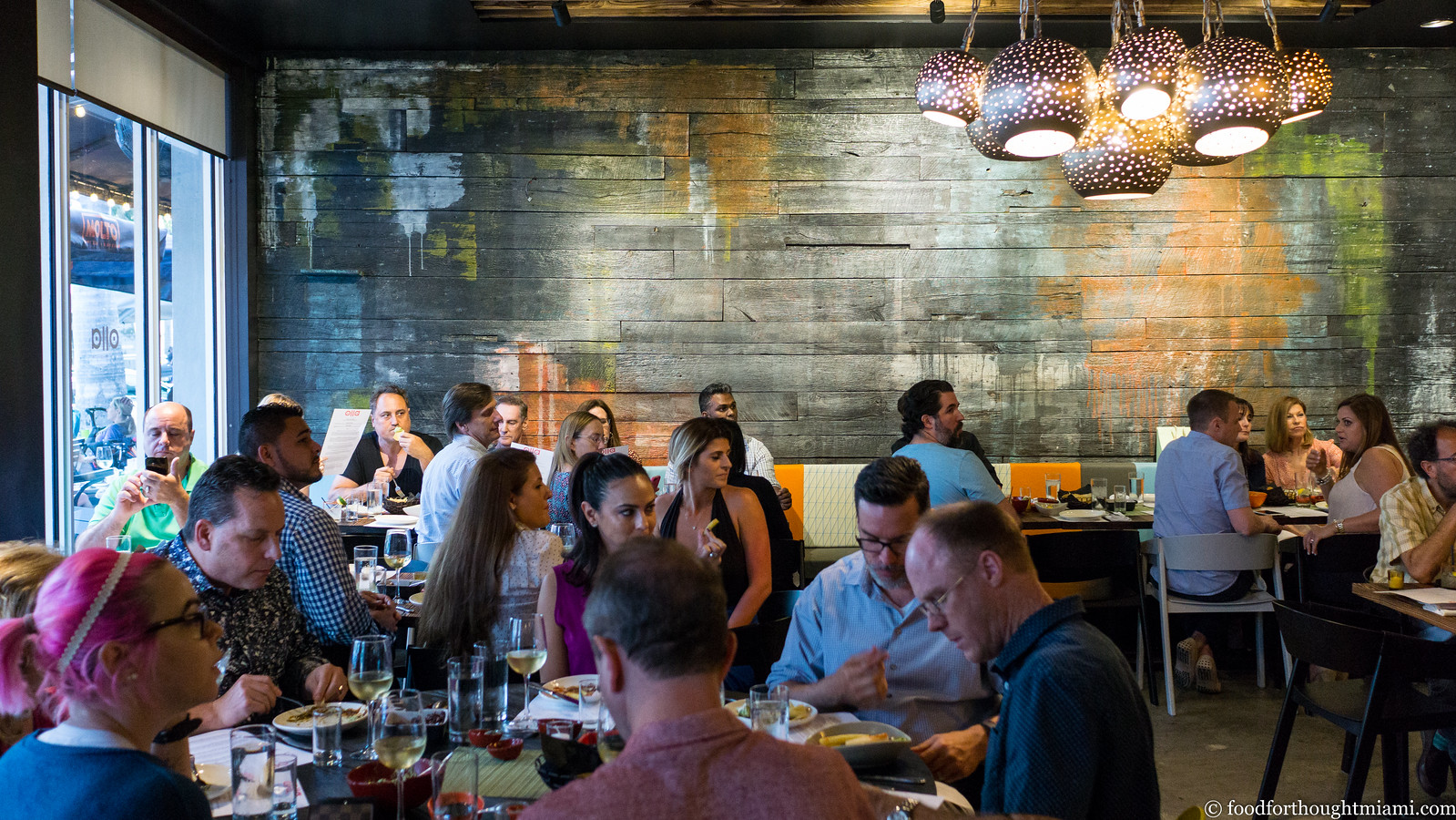
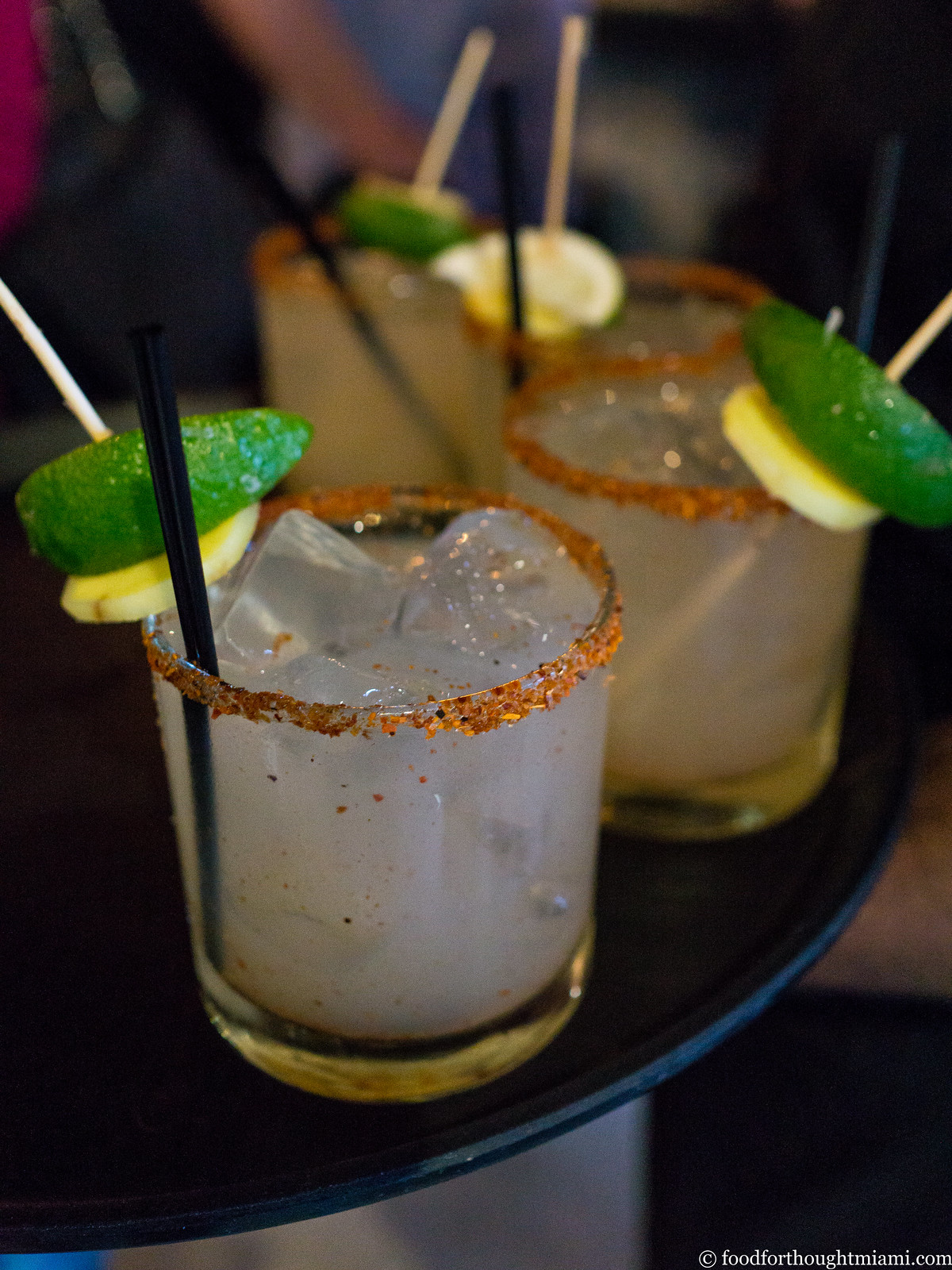
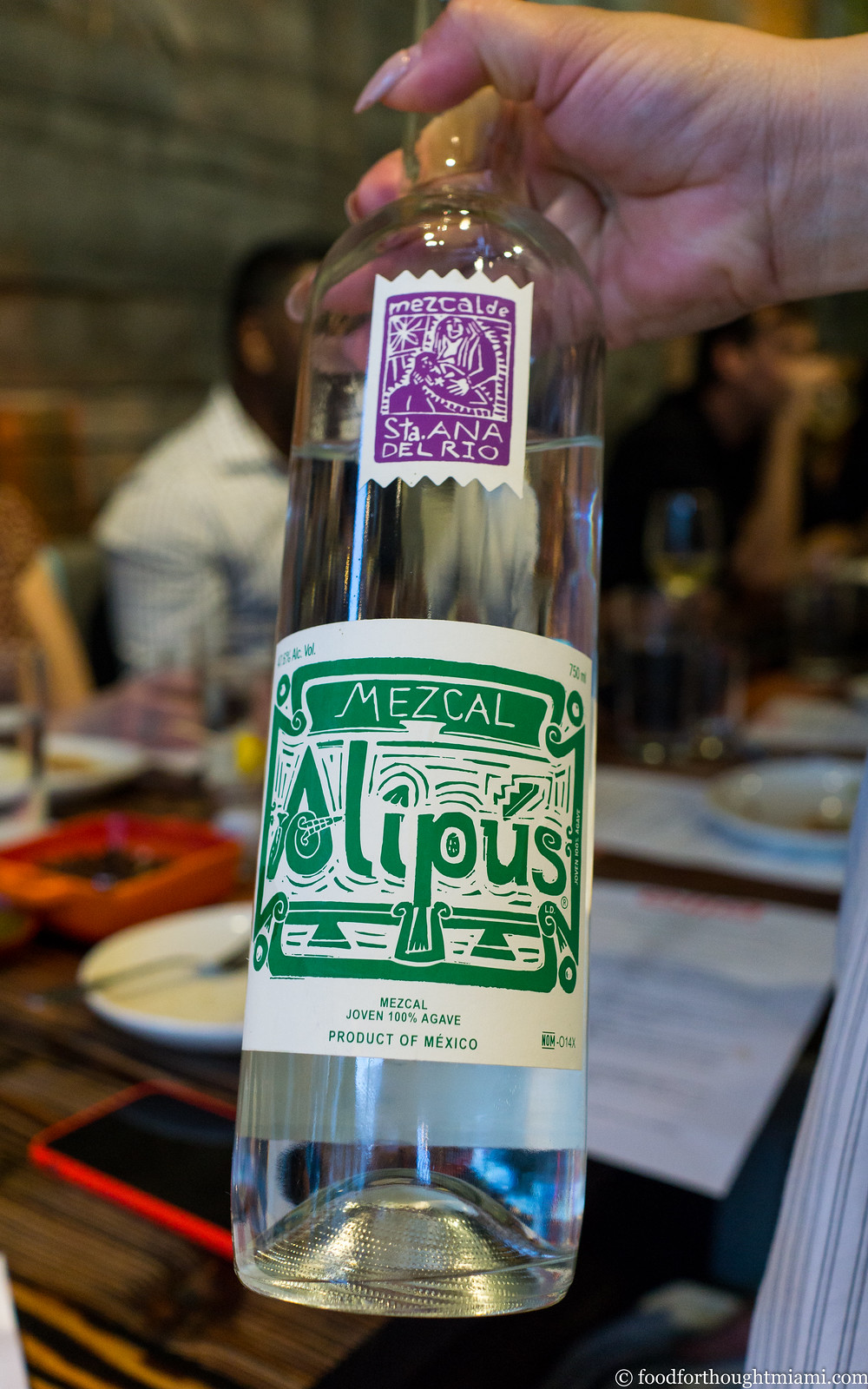

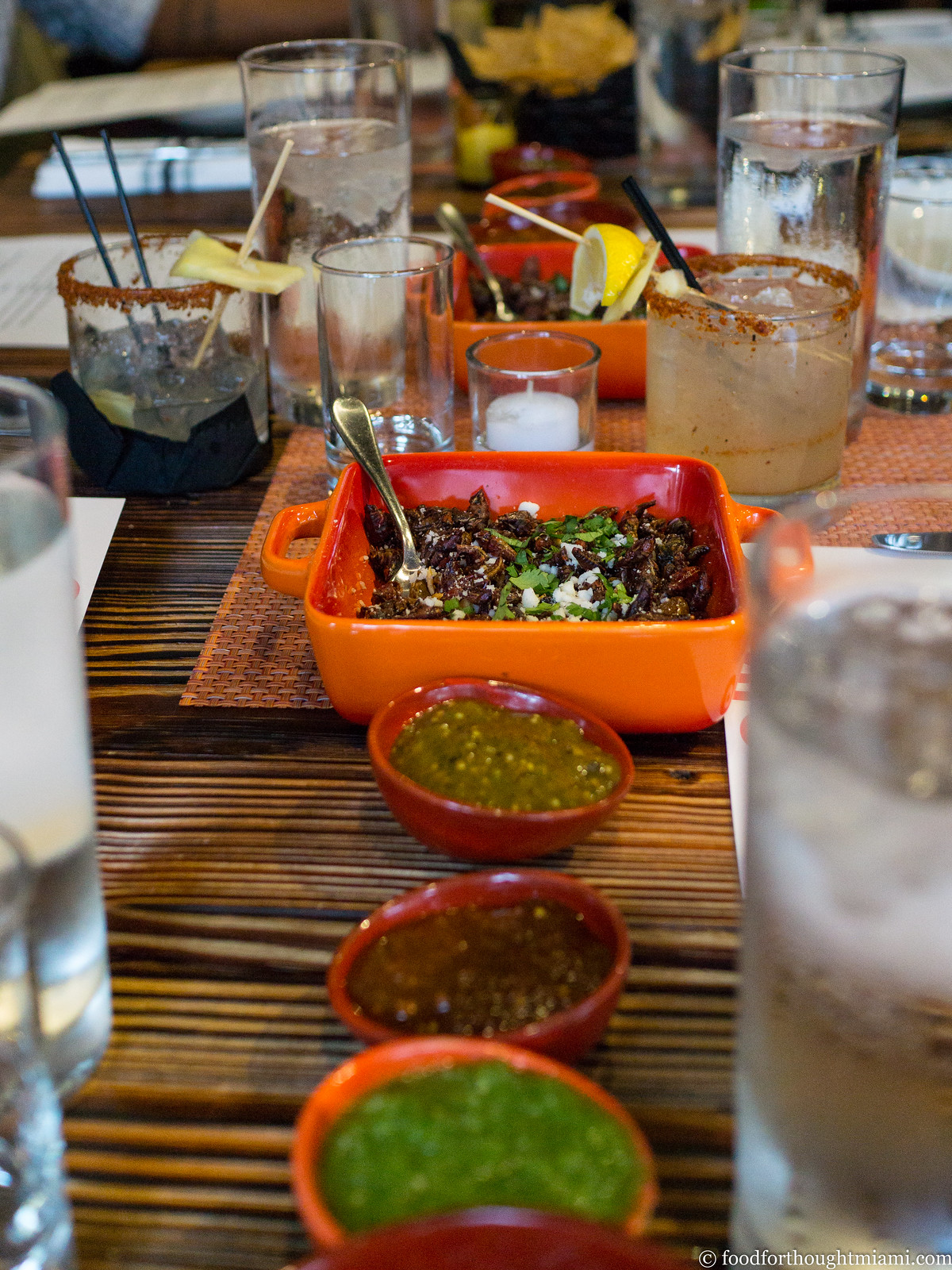

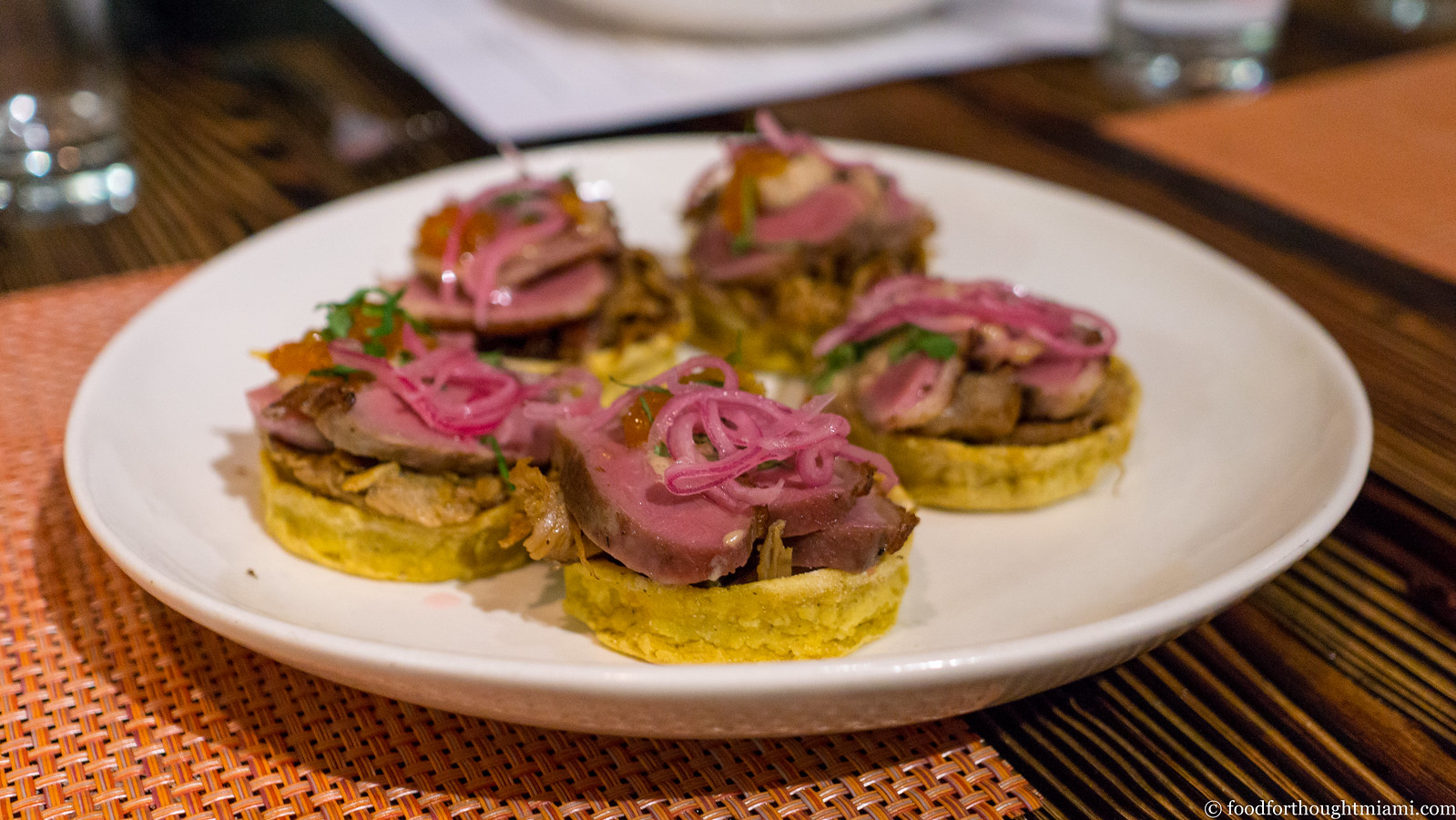

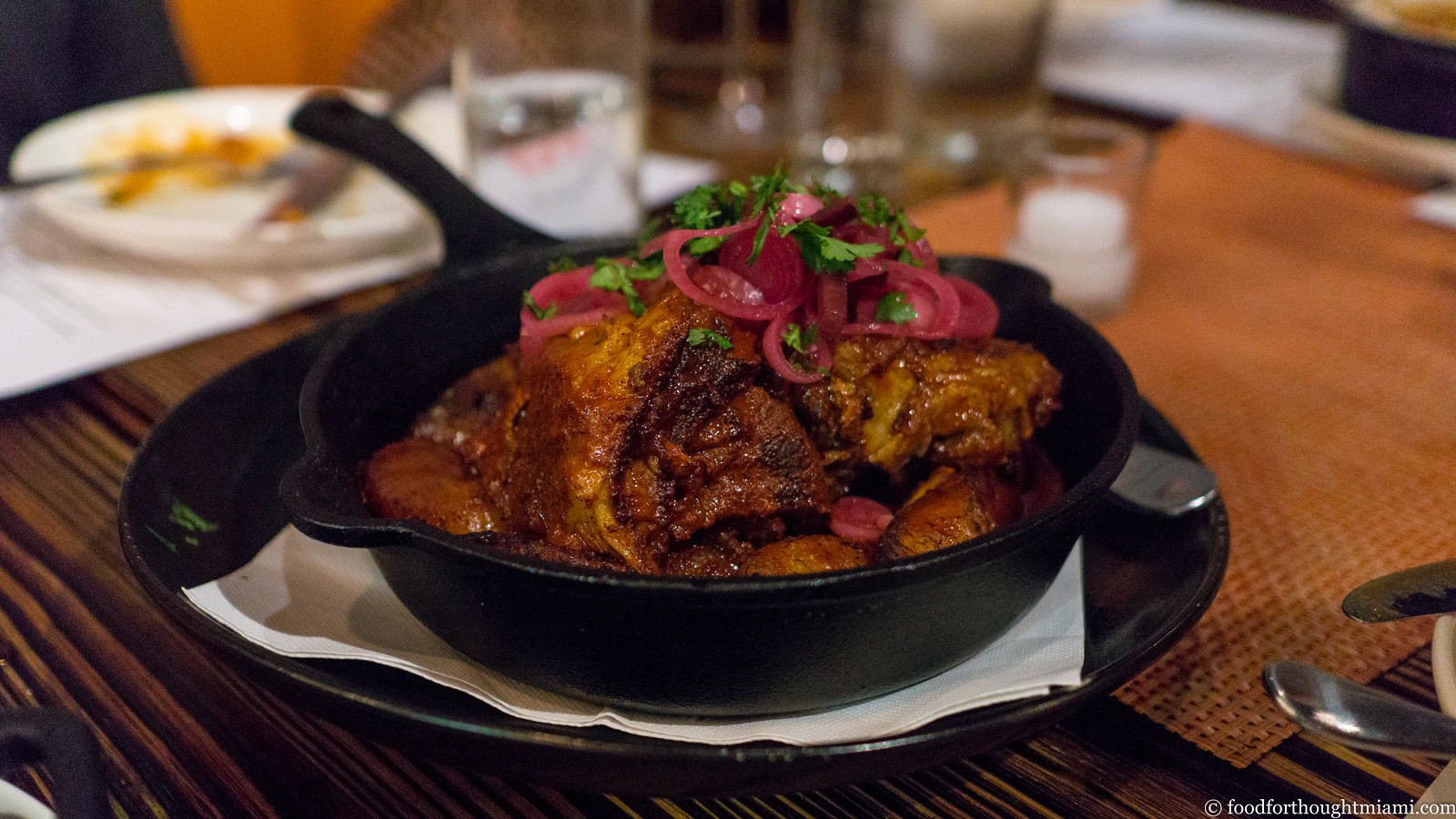
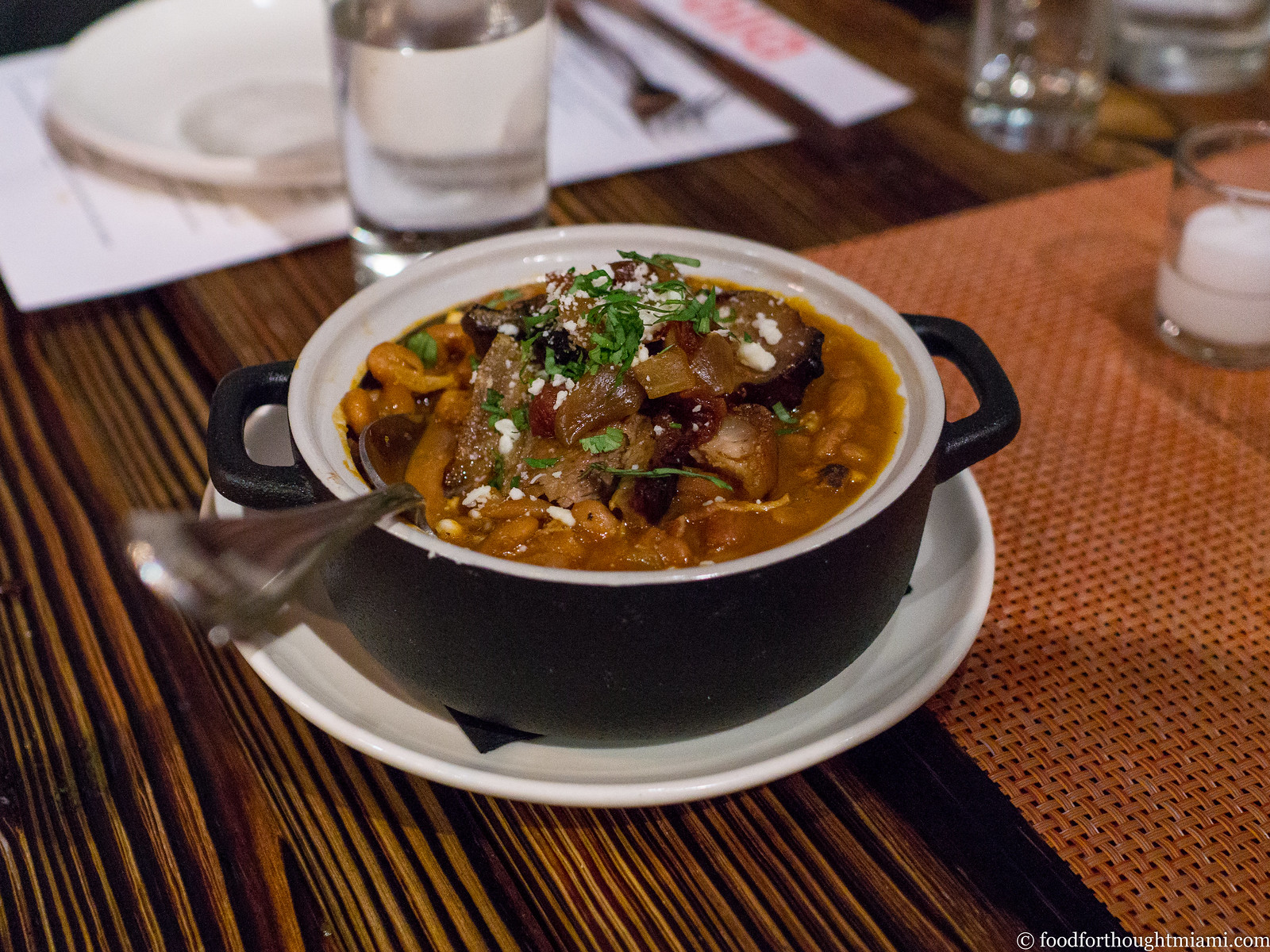
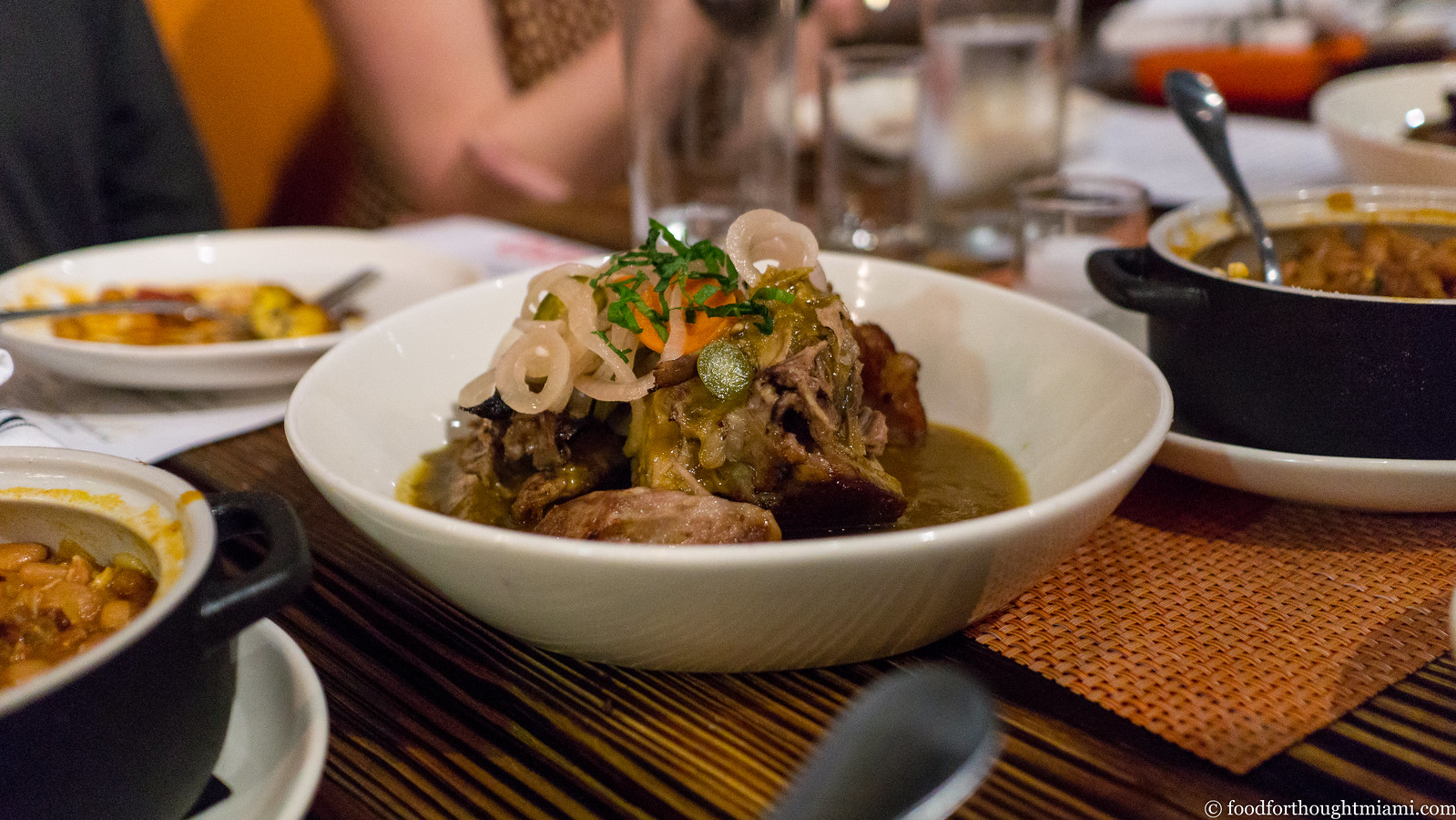
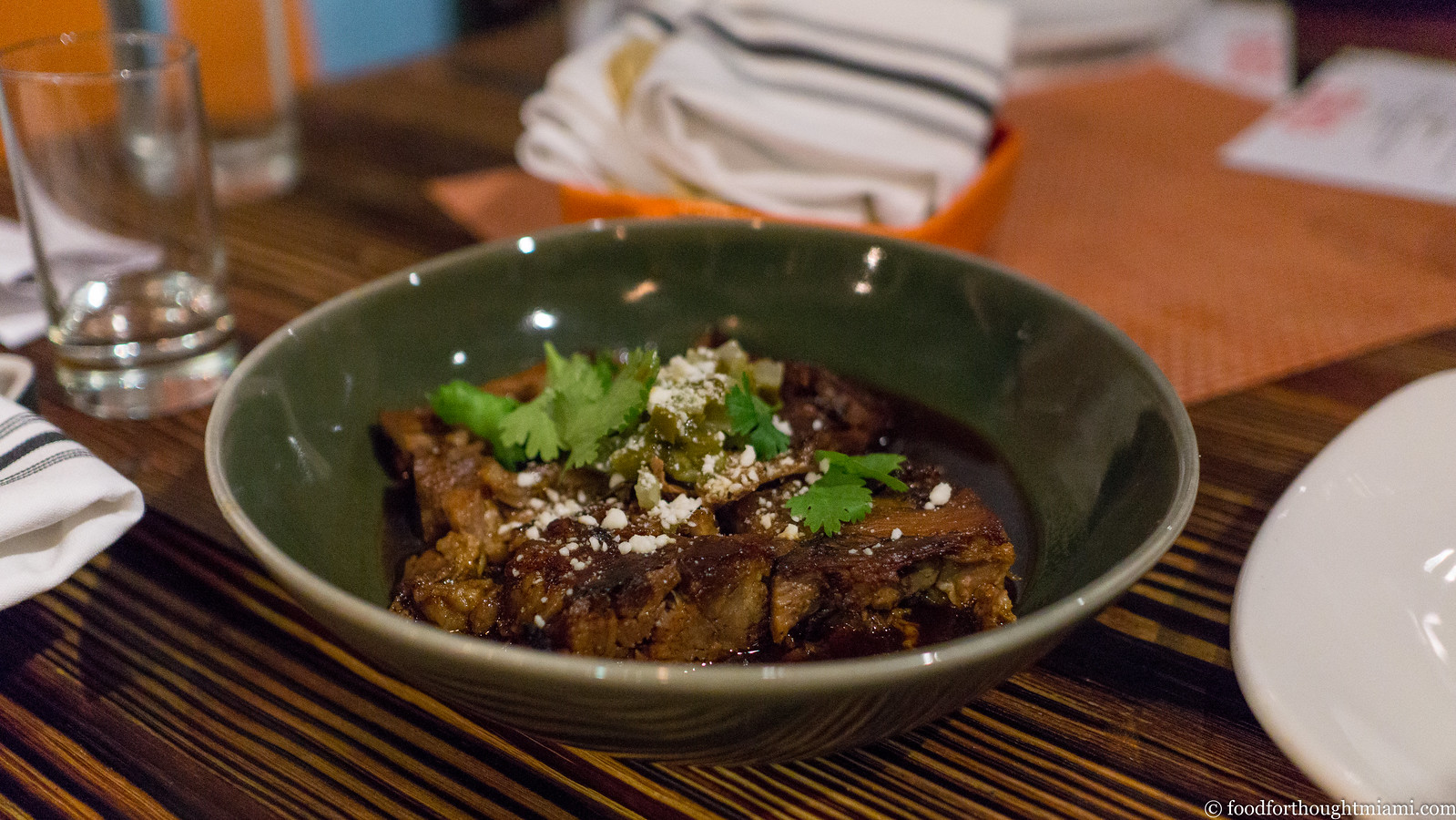
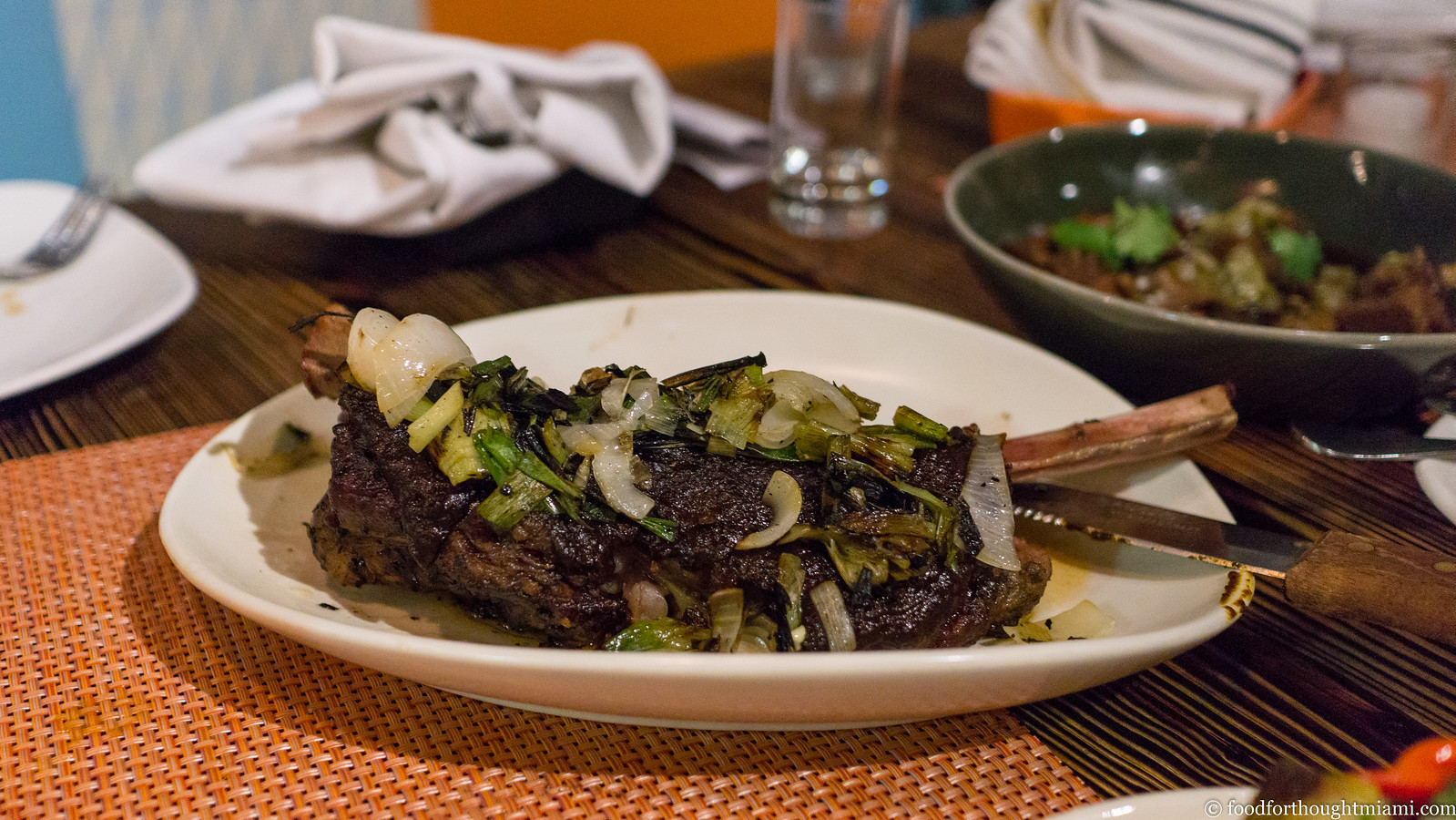

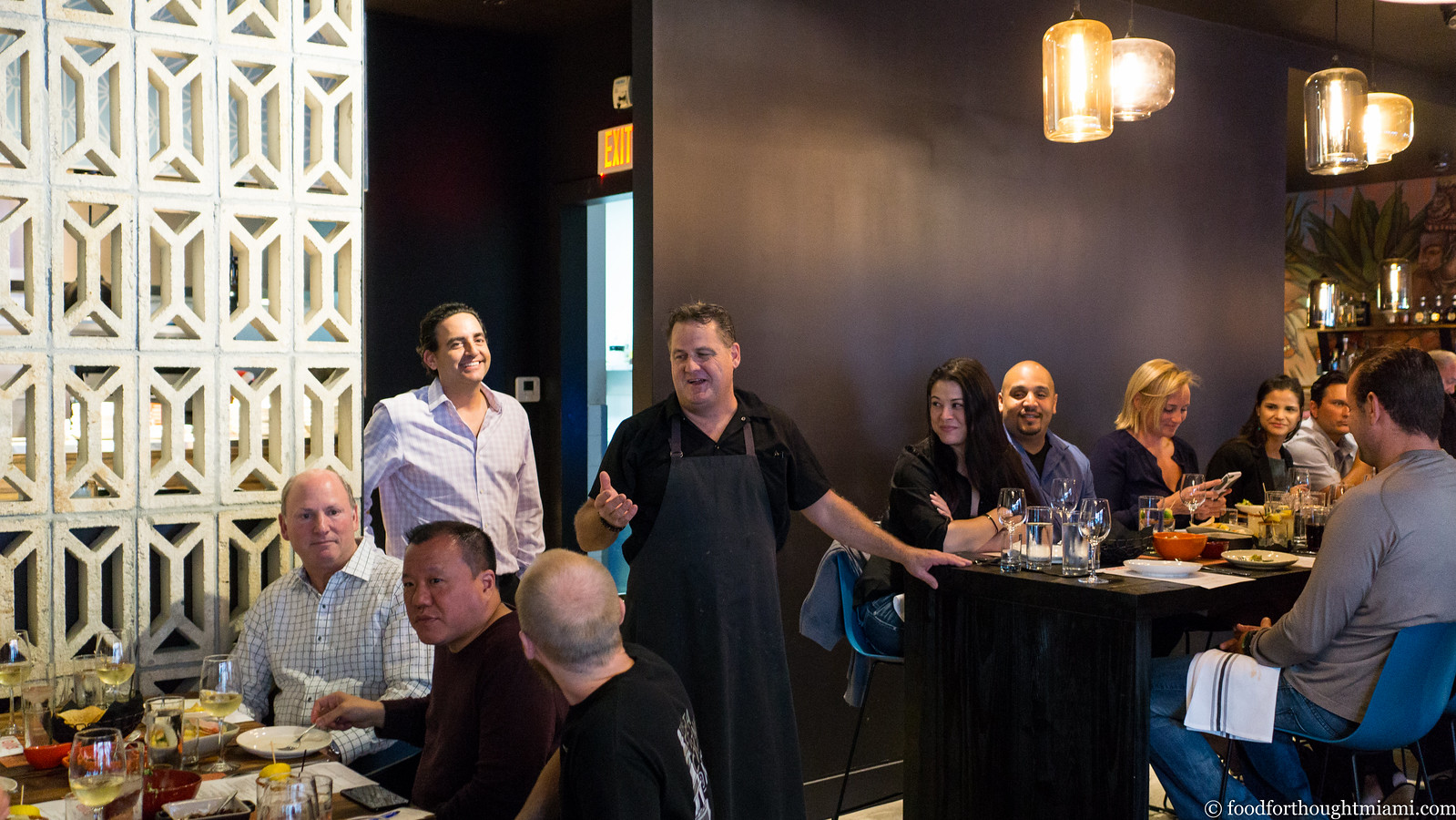
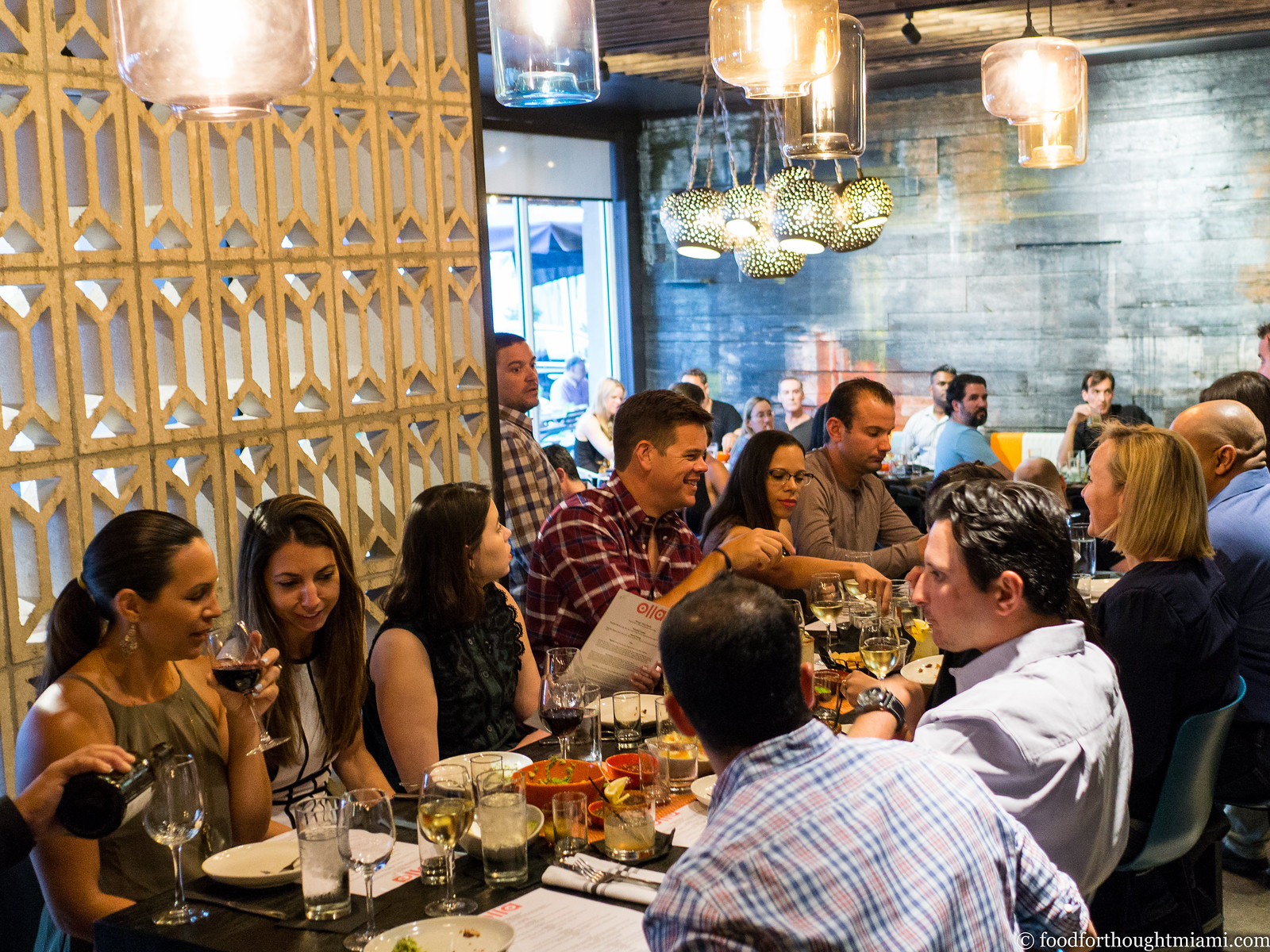
No comments:
Post a Comment